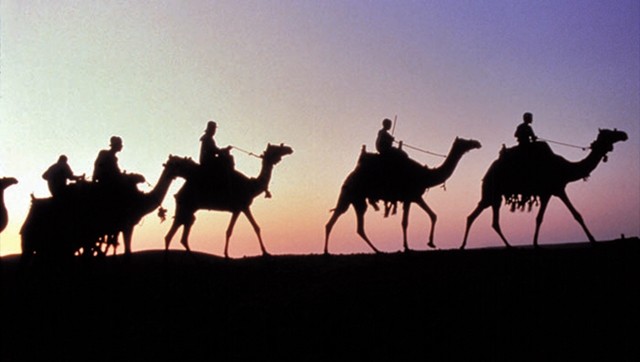
By Jae-Ha Kim
Chicago Sun-Times
September 25, 1998
![]()
“No land on Earth possesses more wonder than Egypt,” narrator Omar Sharif notes in “Mysteries of Egypt,” the latest Omnimax film to play at the Museum of Science and Industry.
And the film certainly plays up some of those wonders: the ancient Pyramids, King Tutankhamen’s sacred tomb and the glorious, winding stretch of the Nile. But what the movie lacks is the excitement and splendor of previous Omnimax films such as the superb “Everest.”
Through smooth narration by movie star Sharif, a native Egyptian, and an occasional re-enactment, the film depicts the intricate process of King Tut’s burial. He was entombed to thwart thieves, who routinely raided the easy-to-spot burial grounds of Egyptian royalty: the Great Pyramids.
The 70-member crew had its work cut out. Each IMAX camera weighed 150 pounds. And the Egyptian government would not allow the team to fly in planes or helicopters to capture the zooming overhead shots for which Omnimax films are famous.
Using a little ingenuity, the director hid a camera in a hot air balloon and got the footage he wanted. The sweeping view over the waterfalls is majestic or nauseating, depending on your point of view. Frankly, there’s no longer a thrill from watching a film that makes me feel as if I’m about to fall off the edge of a cliff.
More effective are the almost still-life shots of the Pyramids and tombs. Some of the world’s oldest buildings are in Egypt – the dry desert air has aided their preservation. What is truly amazing is that many of the Great Pyramids of Giza were built more than 4,000 years ago and remain structurally sound. Of about 100 structures built then, 80 are intact today.
It seems impossible that men built these 500-feet high monuments without modern-day technology.